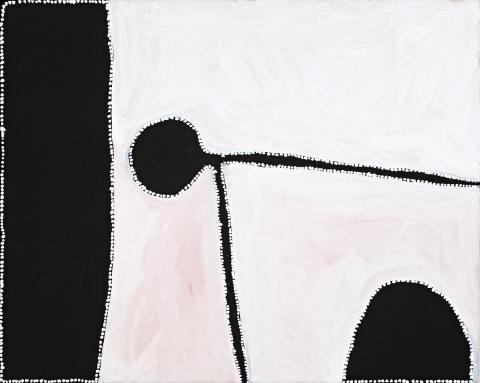UNTITLED, 2004
PADDY NYUNKUNY BEDFORD
ochres and pigments with acrylic binder on composition board
80.0 x 100.0 cm
bears inscription verso: PB CB 6-2004-30
Jirrawun Arts, Kununurra
Private collection, Queensland
Storer, R., Paddy Bedford, Museum of Contemporary Art, Sydney, 2006, p. 161 (illus.)
In 1997, Paddy Bedford, aged in his mid-seventies, first recorded his stories on board and canvas. He did so with a remarkable authority and confidence that reflected his importance as a traditional elder. Within several years, Bedford acquired a reputation for not only inheriting the legacy of Rover Thomas but also for pushing new boundaries with his famously fluent 'walking line' and for taking the East Kimberley school to new heights. Steeped in traditional law and the Ngarranggarrni (Gija Dreaming), he drew on a seemingly endless source of traditional lore and knowledge of significant sites. His paintings combine important family dreaming such as Garnanganyjen (Emu), Birnkirrbal (Bush Turkey) and Ngayilanji (White Cockatoo) with the physical world of roads, rivers, traditional life, stock camp life, stock yard and country visited while mustering.
Innovation and experimentation are fundamental to Paddy Bedford's practice as a contemporary artist. The appeal of his work to international audiences and contemporary art collections worldwide rests in part on this sense of continuous innovation that resulted in a new exciting visual vocabulary that does not compromise Gija law and tradition and which resists comparison with modern Western art canons. His formal language, typified by a symbiosis between bold and powerful forms and an elegance and harmony in composition, evokes the rock escarpments and other amorphous features of the Kimberley landscape. 1
1. Petitjean, G., 'Paddy Bedford', Beyond Sacred: Aboriginal Art, The Laverty Collection, Deutscher and Hackett, Melbourne, 2014, p. 27
